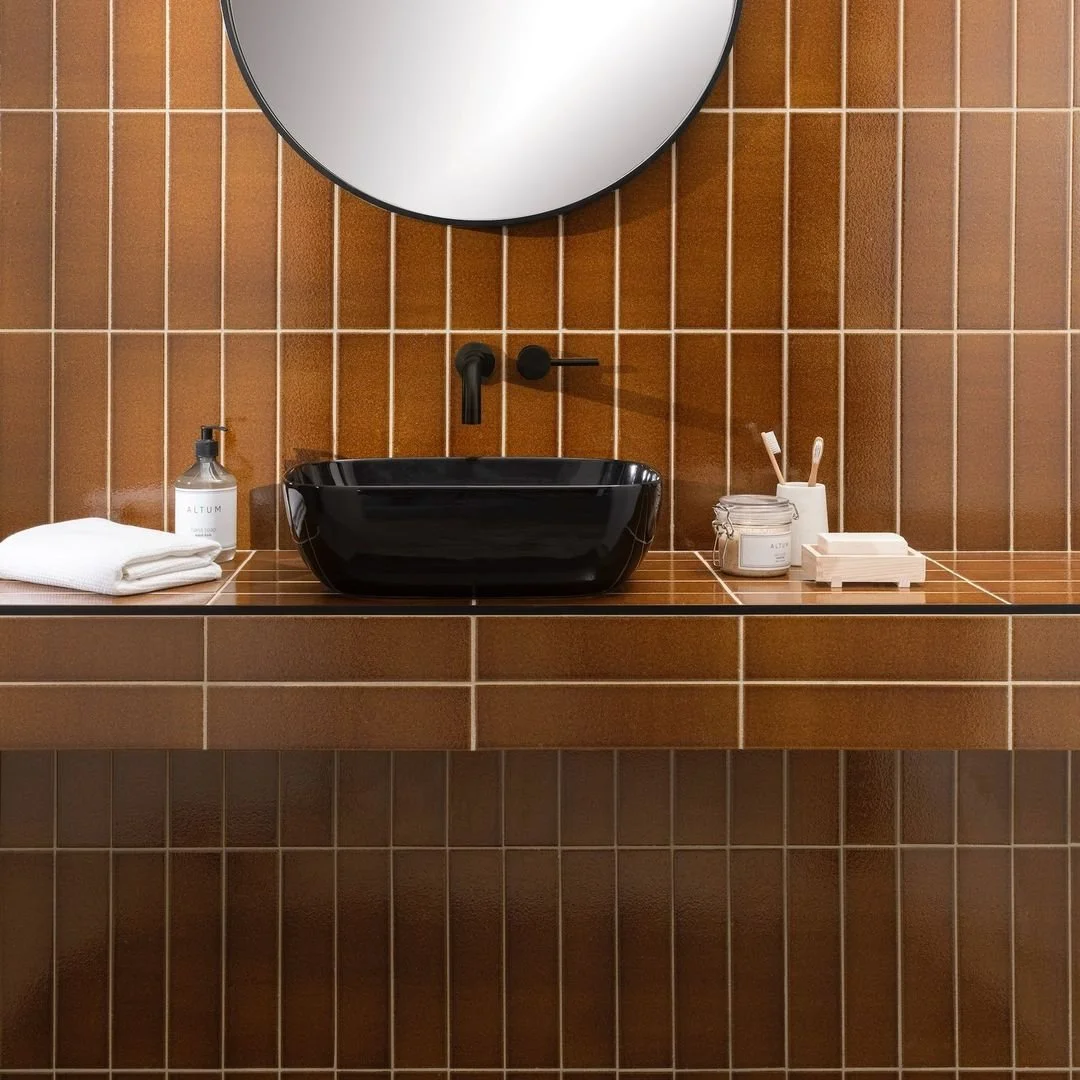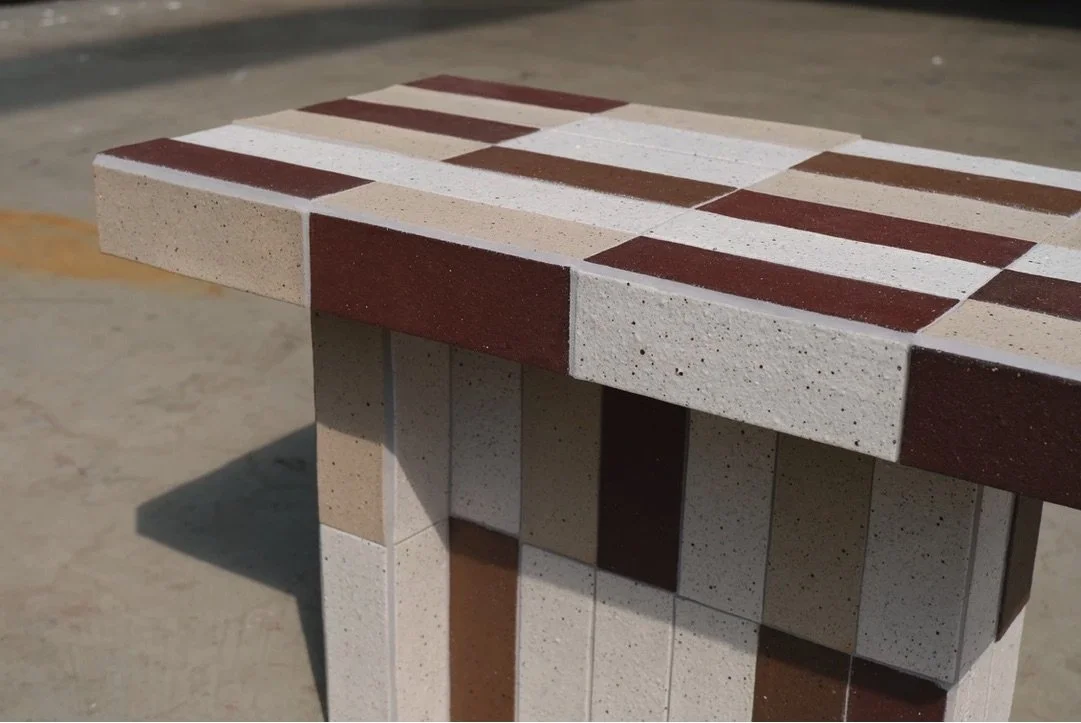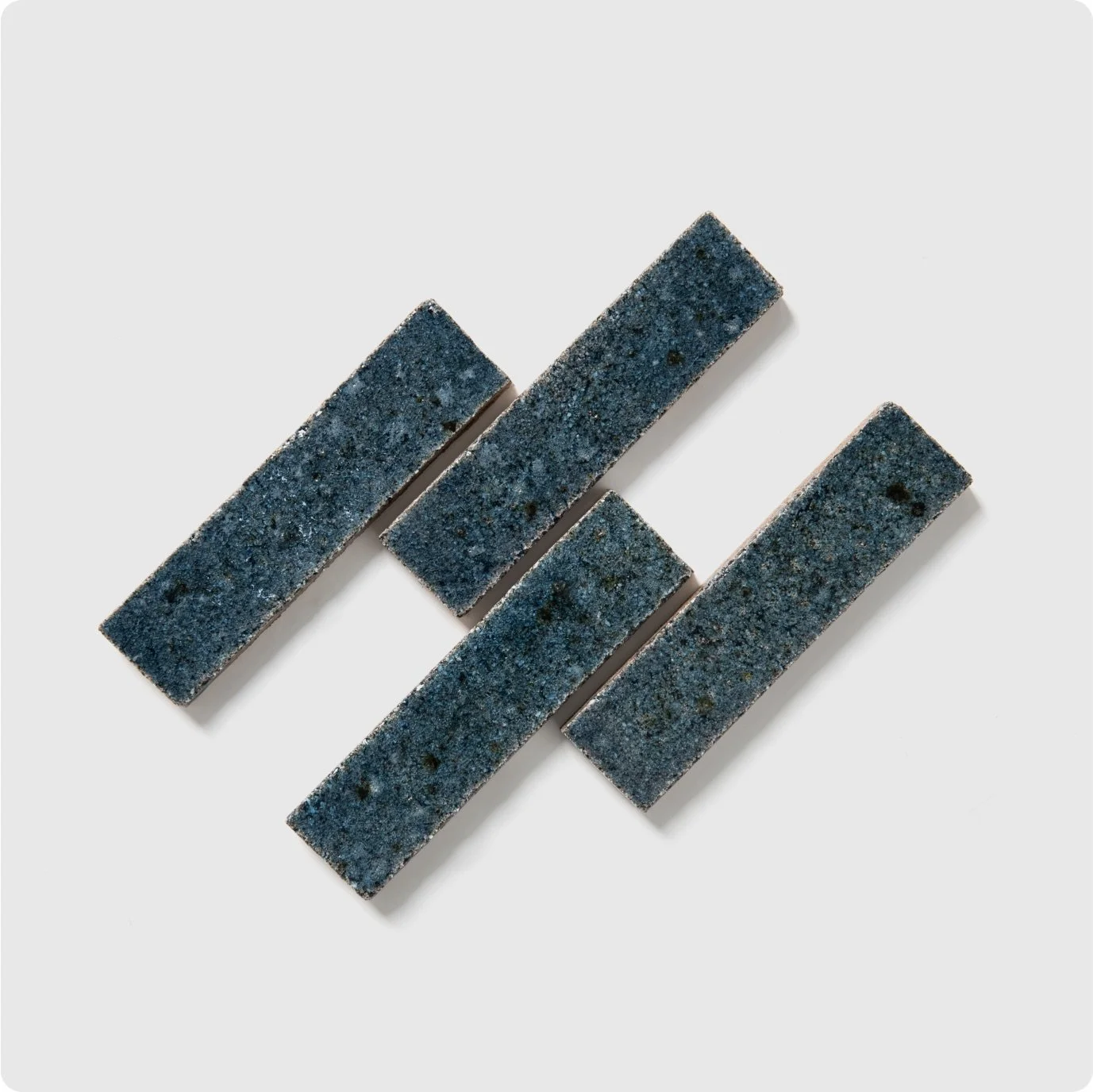Waste Made Wonderful- Tiles and Bricks
In the evolving landscape of sustainable design and construction, an extremely optimistic trend I notice is the increasing use of alternative materials, particularly those derived from recycled waste and natural commercial products, in the creation of tile composites. These materials are not just a niche market innovation; they are swiftly gaining traction in the mainstream market. Below are some of the most promising examples I gathered.
CornWall (Netherlands / Belgium) tiles are made primarily from the cores of waste corn cobs. The pigment and coating, accounting for about 1% of the composition, are not currently bio-based
Artist Honey Biba Beckerlee (Denmark) developed an iridescent ceramic glaze made from silicone dust reclaimed from the floor of a microchip factory
In the UK, Alusid now supplies Topps Tiles with a range called Principle. The product is made from 91% recycled materials sourced from unfired tableware and stoneware residue, tile dust from regular tile production, vitrified ceramic stoneware and recycled glass bottles. For each square metre, 8kg of materials is diverted from landfill.
Emerging designer Rosy Napper (UK) created tiles made entirely from discarded ceramic and white ash diverted from landfill. The self-glazing material can also be translucent for backlit applications
Clé Tile's Strata Linea collection, developed with Rula Yaghmour, embraces sustainability by repurposing surplus quarry stone. This innovative method not only reduces waste significantly but also enhances the collection with a variety of textures and colors reflective of Middle Eastern heritage. This line is a striking example of how reclaimed materials can be creatively used in modern design
Yi Design (China) tackles the 18m tonnes of annual ceramic waste in the country with its handmade YiTile using 100% recycled materials, including glazes composed of recycled biomass, fly ash and construction waste. They are GreenCircle, GIGA, RESET and SRIBS certified
Looking forward, the potential for sustainable materials in ceramic tiles is vast and promising. Industries are encouraged to consider alternative sources like electronic waste, recycled glass, fly ash, and remnants from construction sites. These materials are particularly rich in silicon, making them ideal for use in glazes. Notably, the aesthetic appeal of tiles made from such materials is enhanced by the natural imperfections and flecks in both the tile body and the glaze. These unique characteristics are resonating with consumers who are increasingly drawn to products that offer a sense of craftsmanship and sensory richness, reflecting a growing preference for items that are not only environmentally responsible but also aesthetically pleasing.
This shift towards sustainable materials in tile manufacturing is not just an environmental imperative but also a testament to the evolving consumer attitudes towards sustainability and aesthetics in construction and design. It is a clear indication of the growing synergy between ecological responsibility and innovative design, paving the way for a more sustainable future in the building and construction industry.





